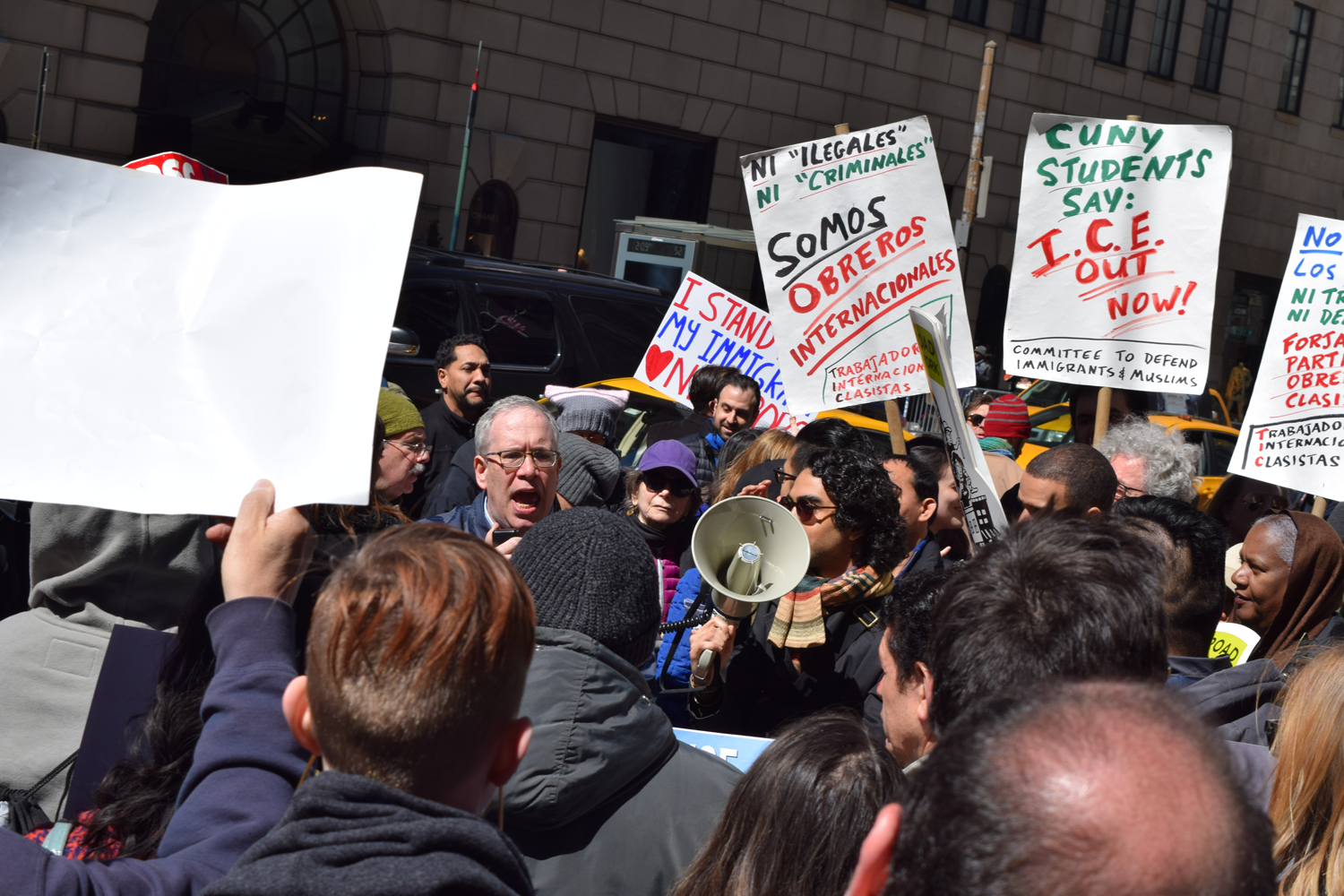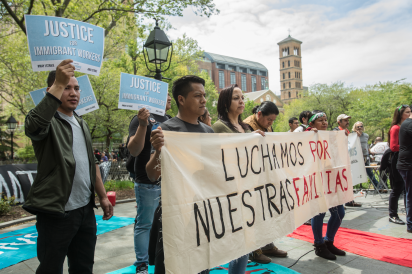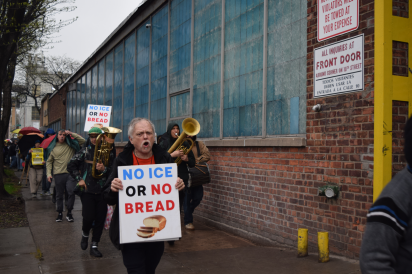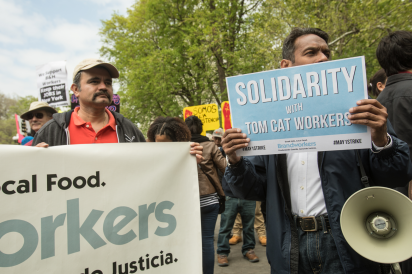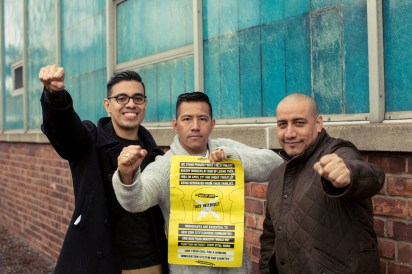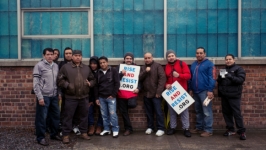Update: Brandworkers & the Tom Cat Bakers
Publisher's Note: In light of the continued discussion on immigration and the rights of undocumented workers, particularly in relation to the food service industry, I asked Neil Chiragdin to file two follow-up stories on what has happened since the first ICE raid at Tom Cat Bakery. The original story was published in our summer issue. —Claudia
“Down with immigrant bashing! Down with bigotry! Dignity for workers, justice for immigrants!” This was the cry of Lydia Catina, a labor trafficking survivor and community organizer for Damayan, a grassroots organization that advocates for Filipino immigrant and migrant workers. The group was one of many to share a platform in Washington Square Park early in the afternoon on May 1 as part of May Day, the International Workers’ Day. The Washington Square rally was one of many on May Day leading up to a much larger march through Manhattan.
Since 2006, the day has become a rallying point for advocates of workers’ and immigrants’ rights in the United States, and this year thousands across the country joined the call for a general strike. The day’s protests were no doubt galvanized by a president who has attacked immigrants in the past, and indeed part of the day’s events were direct responses to his stated policy goals.
Just moments after Catina spoke, Hector Solis stepped to the microphone in front of a crowd of several hundred in Washington Square Park with his wife and two children. He was flanked on stage by dozens of his fellow former Tom Cat employees, having lost their jobs just days prior. “Our struggle is just getting started,” proclaimed Solis. “We’re going to continue fighting.”
The workers were at the time seeking fair compensation in the form of severance pay from Tom Cat Bakery. It has seemed that at every step of this protracted audit from ICE, the company’s policy has been hesitation and restraint. Although Tom Cat did work with a small number of employees among the 31 who were targeted by DHS to allow them to maintain their jobs, this was only after the workers had organized protests with Brandworkers, a local food worker-led non-profit, and gained attention in the media. The remaining 26 felt abandoned by an employer who wouldn’t go to bat for them. For those undocumented workers, Tom Cat’s silence was deafening. The company has not responded to requests for comment.
As Solis recounted the tale of their struggle over the previous months, a sympathetic crowd cheered him on—many among them were facing their own struggles with employers and would take the stage later in the day. Solis encouraged workers to learn from his and his colleagues’ experiences and to get organized through groups such as Brandworkers, before issuing a challenge to the president. “I’d like to send a message to this nation—to this president—that we are hardworking people, we are not criminals, and we are taking this nation forward,” he said.
Speaking about the group’s plans for the immediate future on May Day, Daniel Gross, executive director of Brandworkers, said, “The Tom Cat workers are part of a large Food Chain Workers Alliance contingent … who have united today to call for dignified jobs. Going forward from May Day, Tom Cat workers are going to be engaging the food community—the people they’ve been baking bread for, in some cases, for a decade and a half—asking for Tom Cat customers to hear their voice even if Tom Cat won’t right now.”
During a phone interview in mid-July, Gross reflected on the success of the rally. “It’s clear now, looking back at May Day, that it was the largest national gathering of Trump-era resistance primarily organized by low-wage workers.” Of the Tom Cat workers, he says they remain incredibly unified, and are still active with the Brandworkers movement, even as their campaign against Tom Cat has largely come to a close. “Their heads are held high and they’re building with each other and the Brandworkers community to make sure their needs are met.” The relief fund that the organization had set up for the workers is still active, and has been helping the former bakers and their families as they determine their next steps.
Since the story has gained notice, many have asked what they can do to help workers in situations like the Tom Cat workers found themselves in. Gross suggested listening to the food workers themselves, and engaging with them through groups such as those in the Food Chain Workers Alliance.
“Listen to food workers and rise with food workers and the guidance the workers lay out themselves,” said Gross. “Voting with your fork alone is not enough. When food workers ask you to … go to a protest, or make a phone call, or send an email or ask you to express financial solidarity with their struggle … hear their voice and respond to their call. Don’t let the food industry allow food workers to become invisible.”
Damayan
Brandworkers | @brandworkers
Food Chain Workers Alliance


